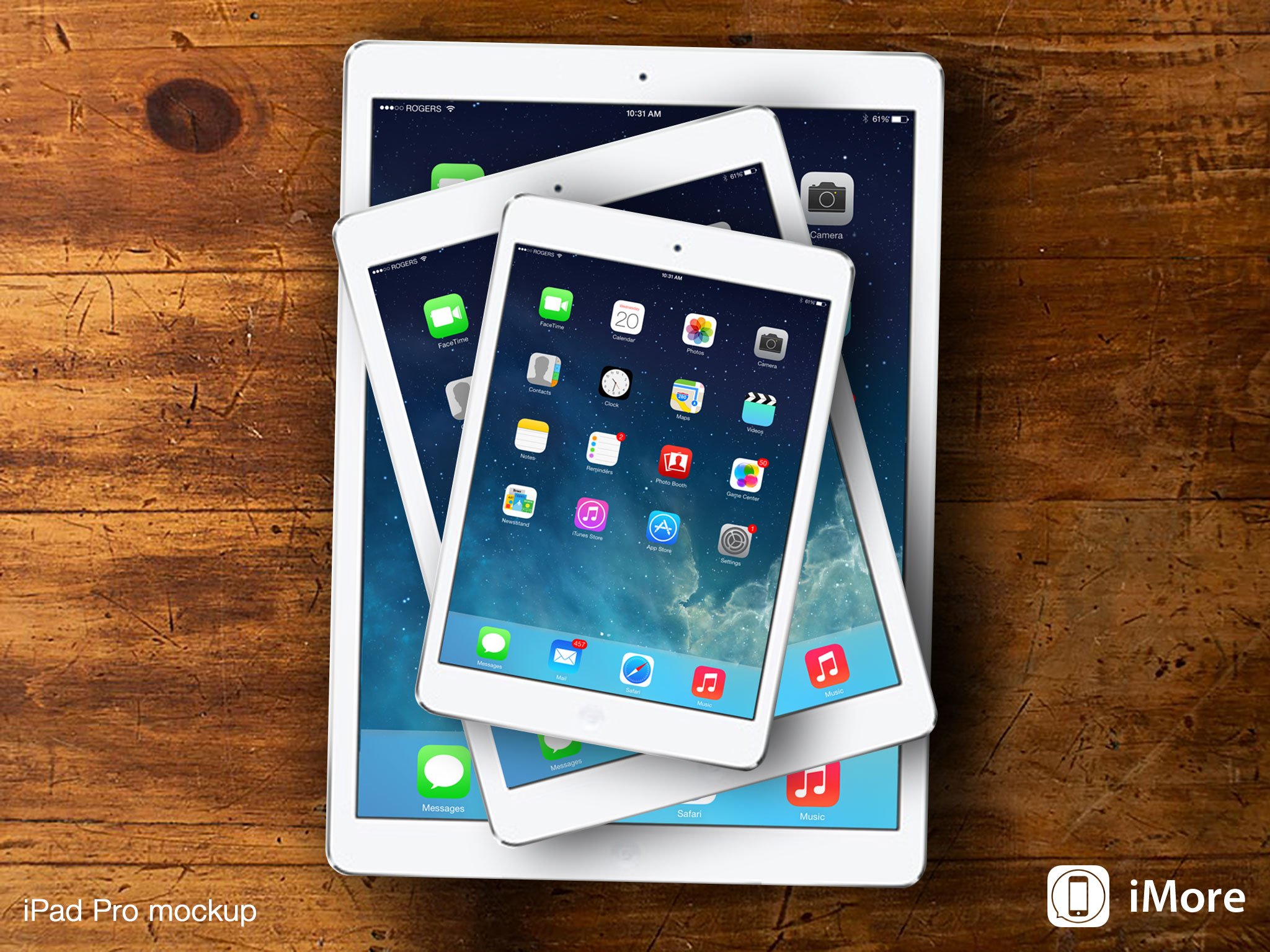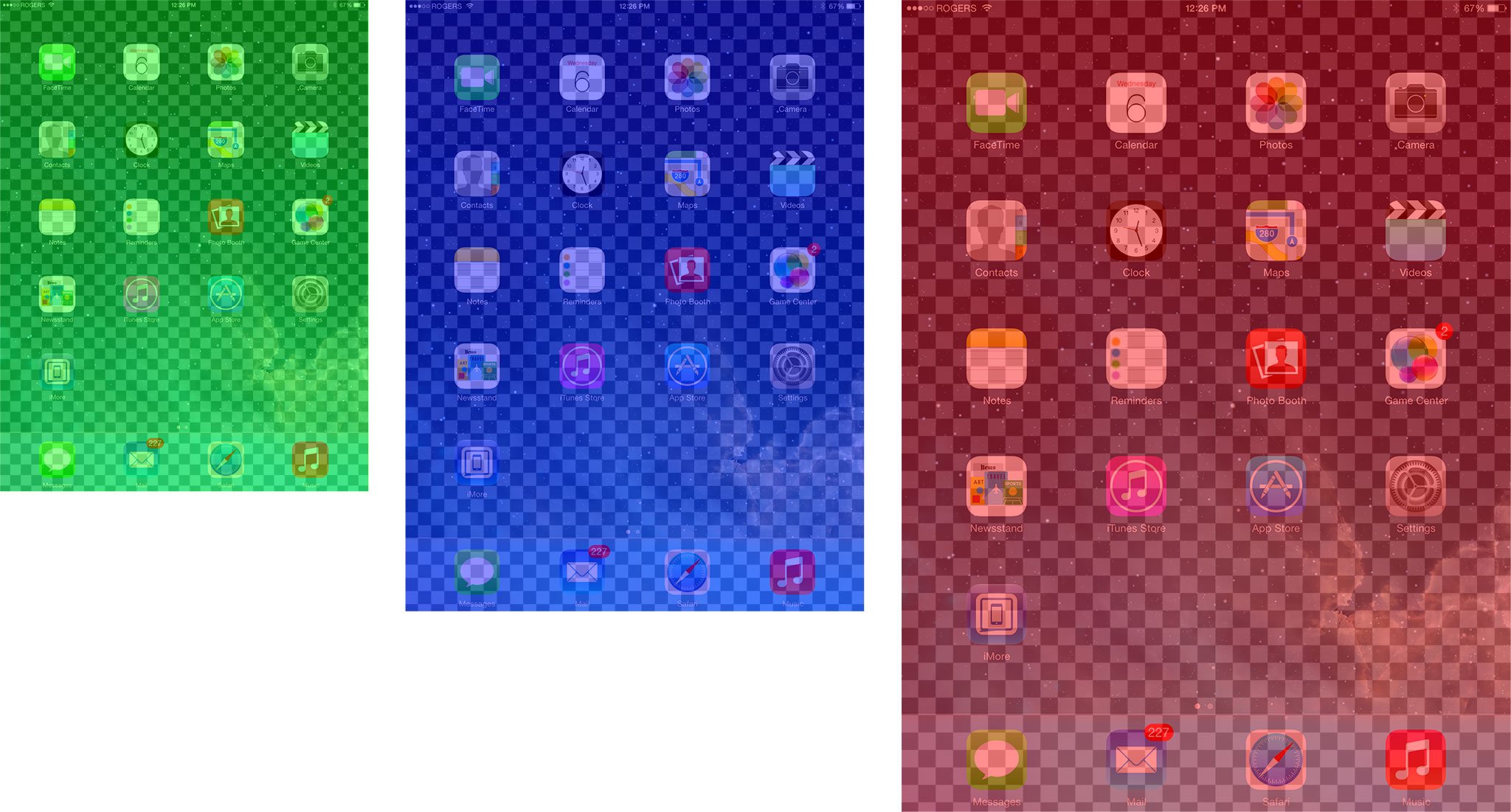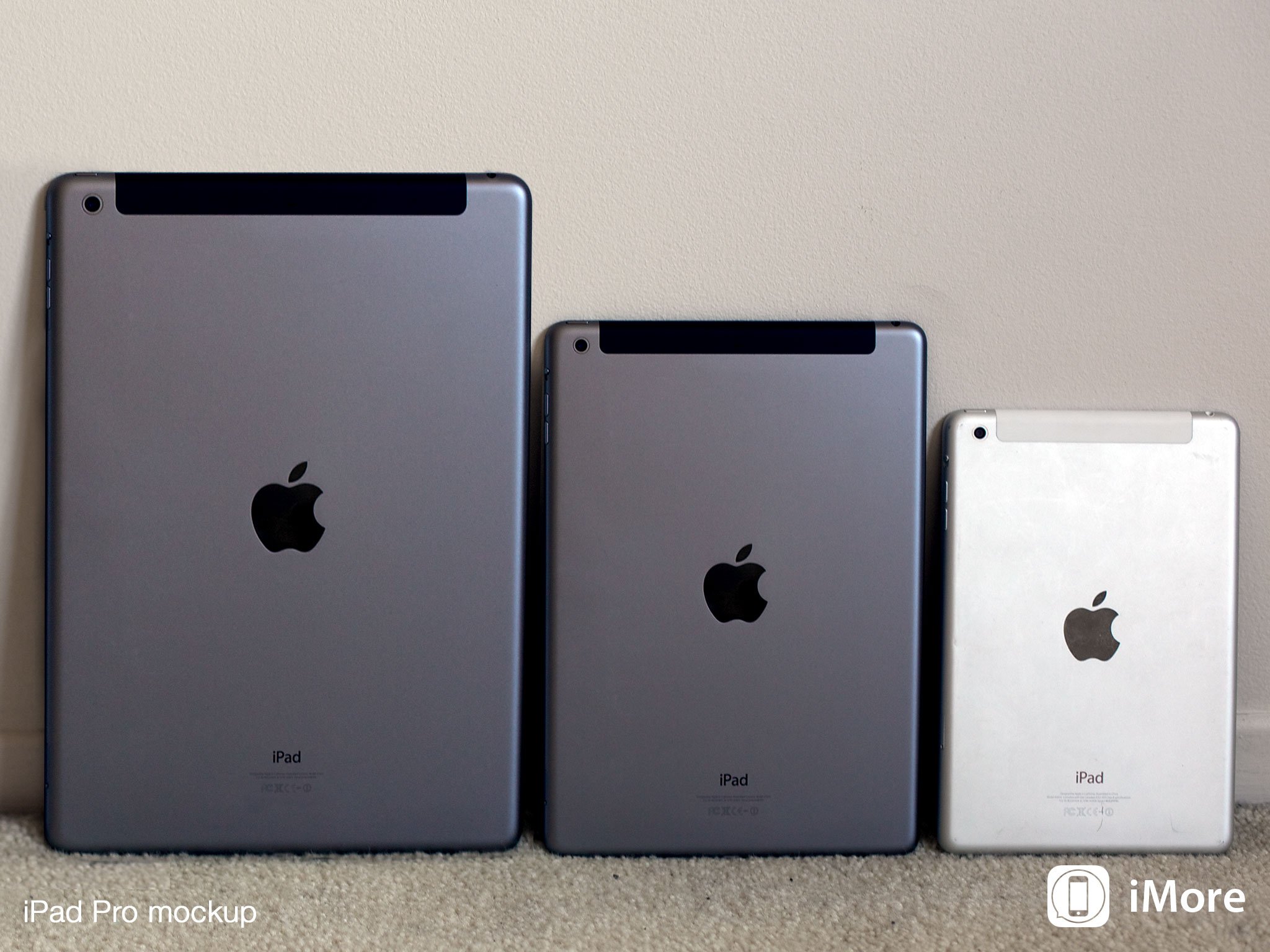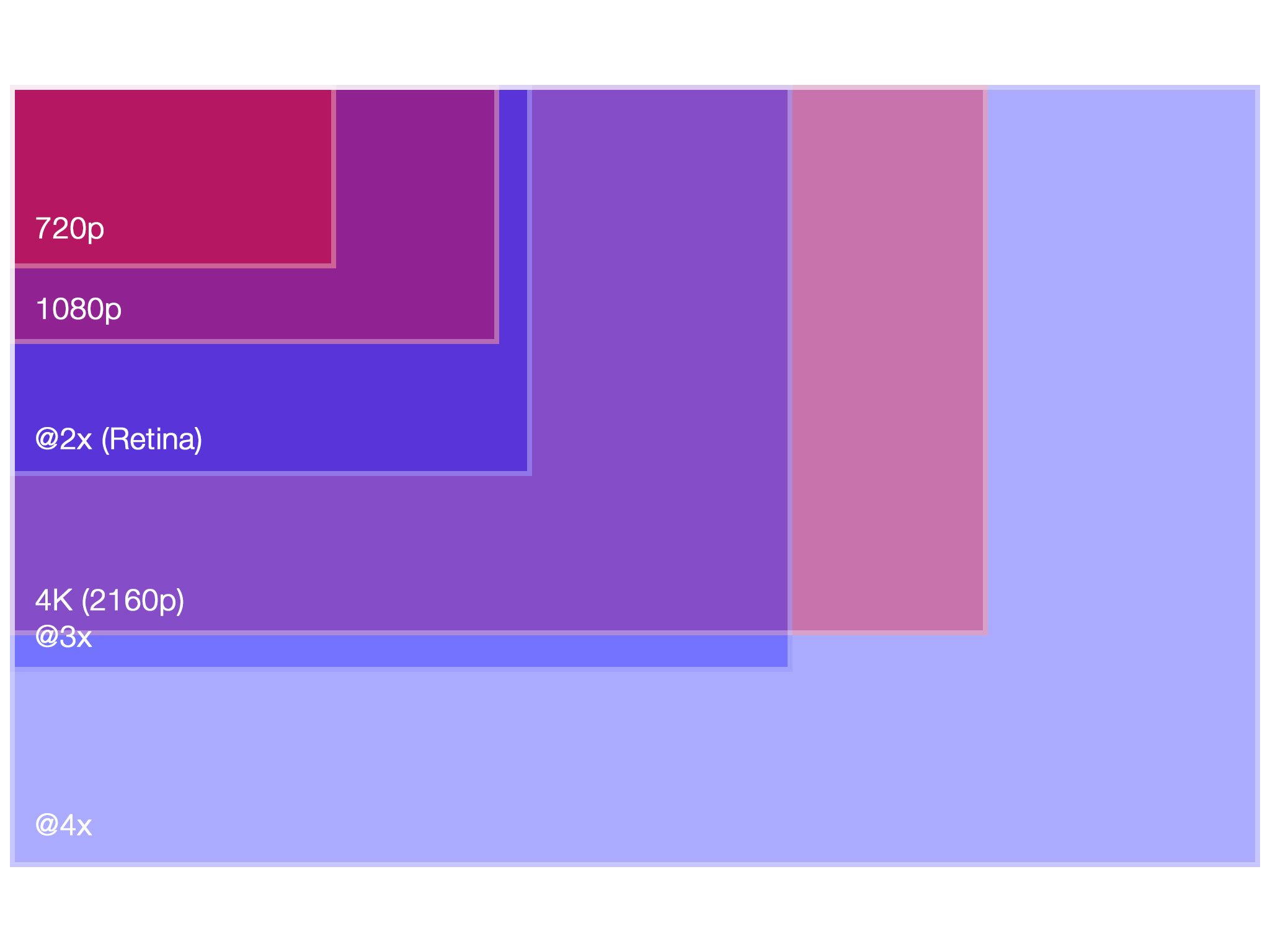Imagining a 13-inch iPad Pro

Analyzing the rumors of a 13-inch iPad Pro and exploring how Apple might go about making it a reality
The minute Apple launches a new device, say the iPad Air or Retina iPad mini, rumors switch immediately to the next. In this case, a 13-inch "iPad Pro". After all, if there can be a MacBook Air and a MacBook Pro, why not an iPad Air and iPad Pro? If Apple can make the iPad more portable, why not more powerful? Now, I'm not so much interested in the rumor — there will always be rumors — but in how Apple could realize such an object. Could iOS be scaled to that screen size, and what it would provide beyond the existing, 9.7-inch iPad, or the 11-inch or 13-inch MacBook Air. Previously I imagined a 4-inch iPhone, which became the iPhone 5, and a 7-inch iPad, which we later saw as the mini. Earlier this year I tried imagining a 5-inch iPhone, and... we'll see what happens with the iPhone 6. So now let's imagine a 13-inch iPad Pro...
13-inches at 2x (scaled up)

The easiest way to add a new screen size to the iPad lineup is to scale the existing one(s). That's what Apple did when it turned the iPad 2 into the iPad mini — they took the original 1024x768 9.7-inch display and shrank it down to 7.9-inches. That increased the density from 132 pixels-per-inch (ppi) to 163 ppi, so things looked sharper, but also smaller, thanks to the reduction in physical size. Apps, interfaces, text, buttons, etc., all smaller. Developers didn't have to modify their apps at all, they "just worked" on the iPad mini the same way they'd always worked on the full-sized iPad, but it did mean some found them just a little too small to comfortably interact with. (Dynamic text might go some way towards mitigating that.)
As of October 2013, both the iPad Air and Retina iPad mini have 2048x1536 @2x screens at 264 ppi and 326 ppi respectively. Since the physical sizes didn't change, all those pixels served only to make the displays clearer. Below is what trying to produce a very small circle (left) at standard @1x density (middle) and at Retina @2x density looks like.

Either way, original or @2x Retina, the result is two devices, two scales, one interface. So, could Apple simply scale the 9.7-inch screen up for a 13-inch iPad Pro the way they scaled it down for a 7.9-inch iPad mini?
Possibly, but not optimally.
A 2048x1536 screen at 13-inches would result in 198 ppi, which is below what's considered "Retina" density. Apple did launch the original iPad mini at 163 ppi standard density even though the full-sized iPad had gone Retina some 6-months prior, so the move would not be unprecedented. 198 ppi is better than 163 ppi, certainly, but nowhere nearly as good as the 264 ppi Retina iPad Air, much less the 326 ppi Retina iPad mini. Below is how the 7.9 inch Retina iPad mini (left/green) and 9.7-inch iPad Air (center/blue) screens, compare with what a theoretical iPad Pro (right/red) with the same screen resolution would look like if scaled to 13-inches (with a 44-point touch target grid superimposed).

Retina is a function of distance, so the further away something is held, the less dense it needs be. However, the 13-inch Retina MacBook Pro is still 227 ppi and the 15-inch, 220 ppi. The standard density 11-inch MacBook Air, by contrast, is 135 ppi and the 13-inch, 128 ppi. A 13-inch iPad Pro could likely be held further way than an iPad Air - more of a lap or table device than a hand-held - but probably not further than a MacBook, which is intermediated by a keyboard.
iMore offers spot-on advice and guidance from our team of experts, with decades of Apple device experience to lean on. Learn more with iMore!
You'd be getting a bigger screen, but you wouldn't be getting as good a display density. There'd be the same number of pixels, just stretched across more inches. Since Retina is a marketing term, a 2048x1536 iPad Pro at 198 ppi certainly isn't out of the realm of possibility, but for 2014, it wouldn't be optimal.
13-inches at 3x or 4x

In order to make a Retina iPad Pro, Apple would have to once again increase the amount of pixels on the screen. @3x - 3 times the original 1024x768 - would result in a 3072x2304 screen at 298 ppi. That's better than the iPad Air's 264 ppi. @4x - 4 times the original 1024x768 and 2 times the current Retina 2048x1536 - would result in a 4096x3072 screen at 397 ppi. That's better even than the Retina iPad mini and iPhone's 326 ppi. Here's what both the raw pixel size (top) and density (bottom) looks like for the current @2x (left/green) screen, and theoretical @3x (middle/blue) and @4x (right/red) screens.

Both @3x and @4x would allow for higher density, better looking displays, the transition would still be turbulent. Here's what @1x - iPad 2, original iPad mini - interface elements would looked like scaled up to @2x - iPad Air, Retina iPad mini - and, theoretically, how they would look at @3x and @4x sizes.

But most apps have @2x graphics now, which present unique challenges @3x. Here's what @2x - iPad Air, Retina iPad mini - interface elements would look like scaled up to theoretical @3x and @4x sizes. Notice how @4x would look roughly like @2x Retina elements, but because @3x doesn't fall on the pixel grid, it would likely get anti-aliased and result in some level of blur (albeit at a tiny size).

Of course, Apple and developers made new @2x assets to support Retina displays natively, and would almost certainly do the same to support theoretical @3x or @4x assets. That would result in interface elements that, in technical terms, would knock your eyeballs back through your skull. Here's the same small sized circle at increasing densities, from @1x (left) to @4x (right).

@3x would be easier to produce, but existing apps wouldn't look as good on it. @4x would be more difficult to produce, but existing apps would look roughly the same. On both, new, upscaled apps would look fantastic. The benefit is that you're not just getting bigger, you're getting more pixels. Text can get even smaller and still look clear, photos and web pages can be zoomed far out and still look crisp. Screens can be bigger and still Retina...
All those pixels, however, won't push themselves. A standard @1 x screen include 786,432 pixels and a Retina @2x screen, 3,145,728. A theoretical @3x screen would include 7,007,888 pixels and an @4x, 12,582,912. If that sounds like a lot to power and make performant, that's because it absolutely is.
More pixels means more light and more GPU and both those things mean more battery. At 13-inches, lightness and thinness aren't the same issues they are at 7.9- or 9.7-inches, but performance absolutely is. Could an Apple A7 processor push that many pixels? Could an A7X? Could an A8?
Going to @3x, or better, going to @4x, would be costly across multiple vectors (see iPad 3 for an example of the density tax). If done well, however, it would result in a much better experience.
13 inches at 2x (adding pixels)

When Apple took the iPhone from 3.5- to 4-inches they did it not by stretching the screen to fill the additional size, they did it by adding more pixels. Granted, it was a change in aspect ratio from 3:2 to 16:9, but it still allowed for an extra row of icons or data, and widescreen games and videos. It allowed not just for more density, but more stuff.
To keep the same 264 ppi as the iPad Air, but fill a 13-inch (12.9-inch) screen, you'd need 2731x2048 pixels (as high as the current 9.7-inch iPad is wide). Both developers and Apple would have to support it, of course, just like they did for the iPhone 5 in 2012, and they'd have to do it for the foreseeable future (the 3.5-inch iPhone will go away a lot sooner than the iPad mini will - we hope).
This is how the Mac lineup works - bigger screen sizes have more pixels and can show more stuff than smaller screen sizes. But iOS isn't OS X, not in interface and not in design. Using frameworks like Auto Layout, iOS might have to become more resilient to screen size changes in the future, but for now increasing both vertical and horizontal pixels, all at once, seems overly disruptive.
13 inches at 4K

Apple, thus far, has eschewed standard screen resolutions. The iPhone isn't 1280x720 (720p), it's 1136x640. The iPad isn't 1920x1080 (1080p), it's 2048x1536. If future behavior can be predicted based on past behavior, that means the odds are against Apple making an iPad Pro at 3840x2160 (4K/UHD).
All iPads to date have had a 4:3 aspect ratio, not 16:9. Apple did change the iPhone aspect ratio from 3:2 to 16:9, so anything is possible, but they didn't do it at the same time as a change in density. They went to Retina first in 2010 with the iPhone 4, and 16:9 two years later, in 2012 with the iPhone 5.

Going to 4K - or any non-pixel multiplied and/or non-4:3 display - would result in existing apps suffering from all sorts of blurring and boxing, and a lot of work for developers. Just going to 4K wide but keeping 4:3 aspect ratio - 3840x2880 - would still have the blurring, but not the boxing.
Apple could run the numbers and decide it's the best compromise for them and for users, pain be damned. As densities get higher, pixels falling off the grid isn't as noticeable either. (The Mac's "Scaled" for "More Space" resolutions are an example of this.)
A clean break is the most painful of options, but could also be the one that provides the most runway going forward.
Bottom line
Whether or not Apple will or even should make a 13-inch iPad Pro remains to be seen. Certainly a lot of artists, designers, photographers, maybe even gamers would love as big an iPad as Apple can provide. Regardless, increasing screen size is a painful thing. If Apple does indeed go to a 5-inch iPhone or a 13-inch iPad next year or at some point in the future, they'll have to figure out the best way to handle it for them, for their customers, and for their developers. They may even have to re-visit the concept of how apps manifest on the screen. If and when they do, will it still be one step at a time? Will the iPhone's increase in size preface another increase in density? Will the iPad's increase in density preface an increase in size? Or will Apple rip the resolution bandage off all at once?
There's a lot more to it, from interface and whether or not 13-inches demand even more powerful apps, to additional input methods like digitizers or motion-aware iSight cameras, to the weight that comes with size and how the feel affects the experience. How have other manufacturers tackled larger screens, and what can be learned from their methods? If Apple really is considering a bigger iPad, these are no doubt the questions they're considering along with it. And that's the fascinating part to me.
Given the limits of technology, if Apple wants to make a 13-inch iPad Pro, how would they do it?

Rene Ritchie is one of the most respected Apple analysts in the business, reaching a combined audience of over 40 million readers a month. His YouTube channel, Vector, has over 90 thousand subscribers and 14 million views and his podcasts, including Debug, have been downloaded over 20 million times. He also regularly co-hosts MacBreak Weekly for the TWiT network and co-hosted CES Live! and Talk Mobile. Based in Montreal, Rene is a former director of product marketing, web developer, and graphic designer. He's authored several books and appeared on numerous television and radio segments to discuss Apple and the technology industry. When not working, he likes to cook, grapple, and spend time with his friends and family.
